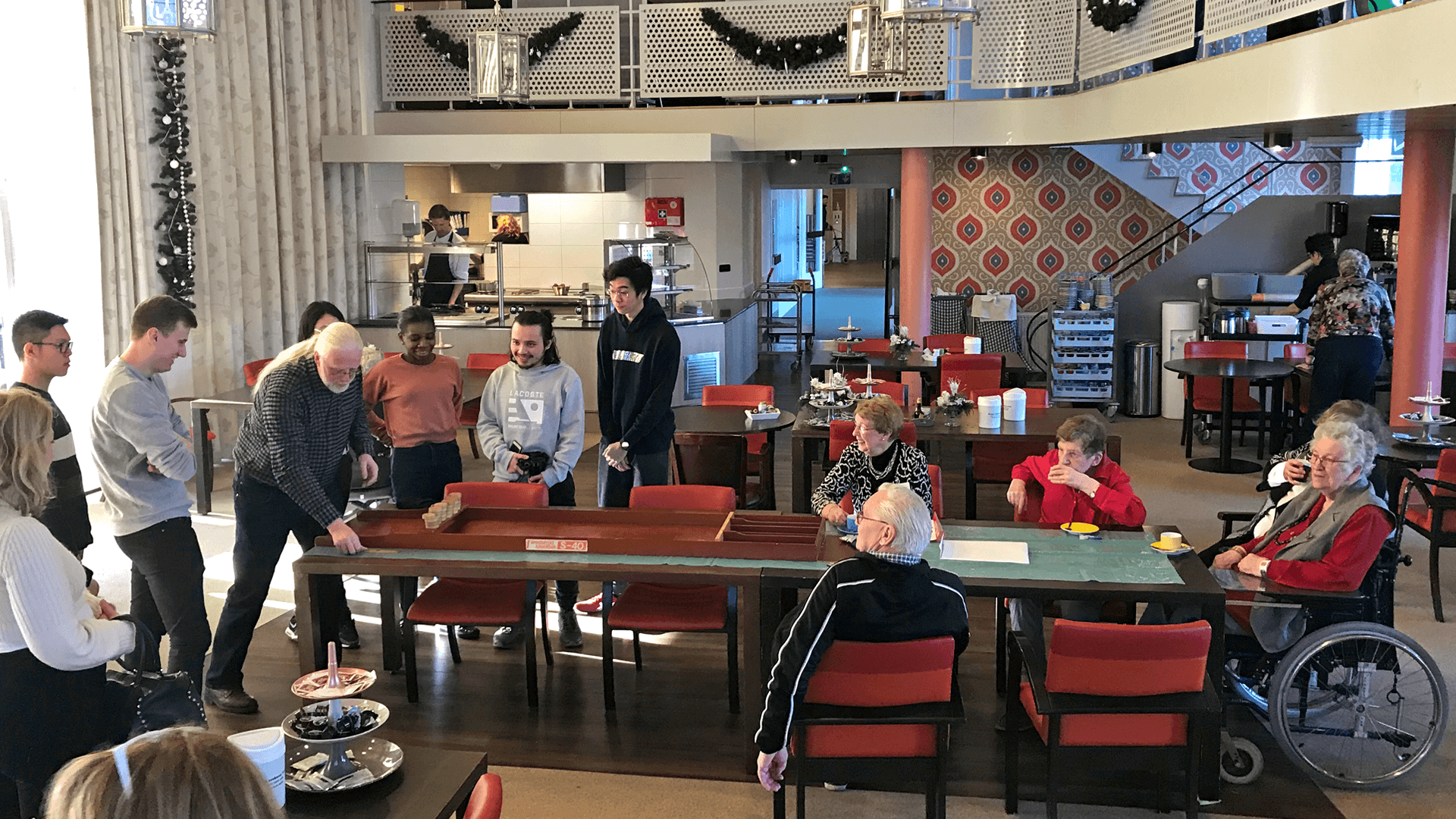In the final part of her ‘learning to innovate’ blog Sonia and the Lincoln University students visit the Humanitas centre in Deventer, Netherlands.
At Urban Edge Architecture we want to create developments that actively encourage social connection, where young and old can live side by side, both benefiting from the social, cultural and economic opportunities of a multigenerational community. There are numerous examples of this socially connected, multigenerational approach in the Netherlands, but perhaps the most famous is the Residential and Care Centre Humanitas in the riverside town of Deventer. Humanitas Deventer is not a new care home – in fact, the original building dates back to the 1970s – but it has recently attracted international media interest because it is one of the first long-term care facilities to also double as a student dorm. In exchange for 30 hours of volunteer work per month, students are able to stay in the centre’s vacant rooms free of charge. It’s an excellent example of intergenerational living and we were keen to see first-hand how it worked.
The first thing to note upon arriving in Deventer is how the care home sits within an existing residential area of the town. There are 160 residents and, incredibly, some 200 volunteers. This is the result of having the care home in the residential area where the majority of residents once lived – neighbours and friends volunteer for an hour or two each week and ensures a seamless connection to the area where residents have lived all their lives. As we saw in our previous study trip to Copenhagen, this is in marked contrast to later living models in the UK where care homes are frequently located in rural areas and often isolate residents from the communities in which they once lived.
Allowing students to live in Humanitas has also helped residents stay connected with the outside world, whilst equally benefiting their mental well-being. There are different options available for the students – they can live there for three weeks, three months or three years… and anything else in between! There is no separate wing for students, they have individual rooms that are spread out throughout the home so that they can get to know and interact with their older neighbours. The accommodation is free on the proviso that they commit to 30 hours of social work a week. The social work does not involve ‘care’ and is based more on well-being and supporting residents in their daily activities, whether it be having a chat over a cup of tea or going for a walk.
When I asked Peter Daniels, the manager at Humanitas Deventer, if he could see any changes in the senior residents since the students moved in he said that, whilst there was no scientific proof, one just needed to look around to see how happy everybody is. He also noted that the young people benefit as well – they start to understand the importance of living in a community. One of the students said that, before he moved to Humanitas, he would avoid older people in town and on public transport; whereas now he has started to value the company of the elderly people, the many stories they can share and the history and experience they can impart.
Addressing us as architects, Peter Daniels said that we should focus our design intent on well-being as, in his opinion, this is what later living should be about: happiness and well-being at the end of your life. He said that there are some care homes in the Netherlands that are much newer and brighter, yet there is still a waiting list to move into Humanitas because of the environment and community it provides. He also said that we should always consider the social context and be adaptable to the individual needs of the people who move in.
At Urban Edge Architecture, we are interested in all aspects of later living, from retirement to extra care. We also believe profoundly in the benefits that can come from social connection and multigenerational living. Not only are shared and social spaces important for physical and mental health, but they will be considered a necessity for the next generation of senior citizens who want to continue to play an active part in society. Within the later living sector, care and dementia care present the biggest challenges for connected living, yet examples in Copenhagen and the Netherlands prove just what can be achieved if we begin to challenge the expected norms.
